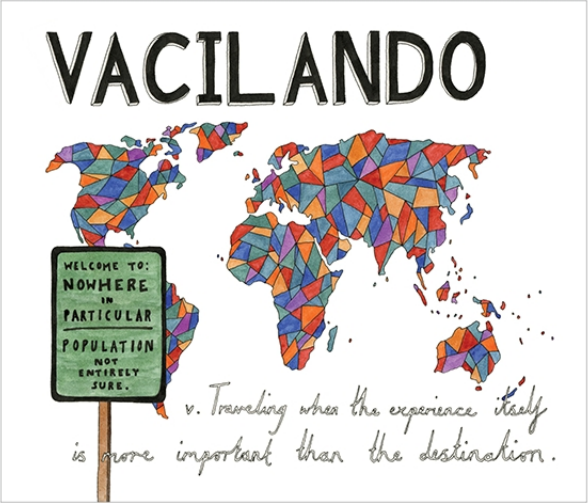By Charles Raffaele
A class full of learners with different home ('heritage' and/or marginalized) languages that these students could conceivably bring to the table, but with often no conceivable avenue for bringing these in for real. Is this a situation in your class, as it often is in mine? Well, perhaps there are some solutions to this problem. In this piece, I will outline and use as a jumping-off point some research on multilingual classrooms, which addresses both what underlies this language issue in education and ways that the language of the classroom can be opened up for the benefit of all.
I will start off with the paper that blew me away most on this topic. Busch (2014), taking from a study conducted on a multigrade (1st-4th grade) class in Germany, has a lot it can teach to us college instructors (despite the substantial age difference). It describes a classroom where the teacher and learners can each assume dominant positions (based on degree of ability with each given language), students could speak on topics of interest taboo for the classroom through assignments which allow expression through metaphor, and resultant ‘little books’ could be created that are multivoiced (created through collaboration by many, though with the principal author being the individual child) and multidiscursive (free in genre of medium utilized and topic focused on).
Setati (2005), on the other hand, provides a description of what I myself would assess to be the least fully tapped vision of the multilingual classroom. It describes the instruction of a teacher in South Africa who uses multiple languages in her mathematics classroom but must rely on English for the actual math instruction itself, given English as the "language of learning and teaching (LoLT)". Though it is fantastic that the teacher could incorporate the languages of her students on some level, thus acknowledging the identity of her students as legitimate (particularly in a country like South Africa, where, as Setati [2005] highlights, language is entwined with politics and the country’s ugly history of racism, predominantly against its black majority population), bringing home languages in for non-instructional (e.g. procedural) matters is not as high an acknowledgement as truly full implementation of multilingualism in instruction. The future of our educational system will be forever limited if students' cultural competencies (of which language is often a major element) are not given their proper due as resources to be brought to the table for the best collaborative alchemy to take place.
The documentary “Yo Dude, Cosa Wena Kyk A? – The Multilingual Classroom” (Achmat, 1992) (the phrase in the title being a multiple-language phrase presented in the film by a student, translating in English to “Yo dude, what you looking at?”) shows to our eyes and ears how multilingual activities may take place in a classroom. Echoing the malleability of teacher/learner roles described in Busch (2014), learners are seen here becoming teachers, and teachers becoming learners. The zeal that students are witnessed to be able to show for learning portions of many different languages in this video is remarkable.
Political issues behind the resistance to including students' heritage languages in the classroom are discussed in Cummins (2005). Xenophobia about immigration and linguistic diversity are mentioned here as roadblocks to sound policy. Challenging the assumption that languages are best kept separate from each other (including in both traditional and bilingual schools) is emphasized as an important step in recognizing the heritage language as a learning resource. The paper suggests such methods as emphasizing cognate relationships between languages (keep in mind, for example, that English contains words from such wide-ranging languages as Arabic, various European languages, Hindi, Chinese, and various African languages), the class creating dual language books as in Busch (2014), and usage of sister class projects (i.e. taking advantage of the inter-cultural/lingual opportunities available in coordinating two classes to work together on the same project).
Instructors should strive for a healthy and future-oriented intermingling of languages in the college classroom, and make efforts to include specifically-allotted time and energy for accomplishing this purpose. The goal is then not simply recognition of students’ heritage languages as valuable in the conversational or procedural interim between learning, but instead integrated into the learning process itself. This set of directives (which is, by the way, not only to all of you but myself as well) is not simply a suggestion for the sake of humanly treating our students as the individuals they are, but a way to attempt to maximize the work we can do in our classes and more broadly advance academia and ultimately transform our society. This push might even guide your research into previously unconsidered realms as well; for example, when do you plan to do your study on vacilando?

Page on Spanish word “vacilando” from book “Lost in Translation: An Illustrated Compendium of Untranslatable Words from Around the World”; the book was mentioned by a student during my class and, the week after, brought in by said student to be passed around for everyone to take a look at.
References
Achmat, Z. (Producer & Writer). (1992). Yo Dude, Cosa Wena Kyk A? – The Multilingual Classroom [Documentary film]. South Africa: The National Language Project. Retrieved from https://www.youtube.com/watch?v=XnrDGB3uPEA .
Busch, B. (2014). Building on heteroglossia and heterogeneity: The experience of a multilingual classroom. In Heteroglossia as practice and pedagogy (pp. 21-40). Springer Netherlands.
Cummins, J. (2005). A proposal for action: Strategies for recognizing heritage language competence as a learning resource within the mainstream classroom. Modern Language Journal, 585-592.
Sanders, E. F. (2014). Lost in Translation: An Illustrated Compendium of Untranslatable Words from Around the World. United States: Ten Speed Press.
Setati, M. (2005). Teaching mathematics in a primary multilingual classroom. Journal for research in Mathematics Education, 447-466.
